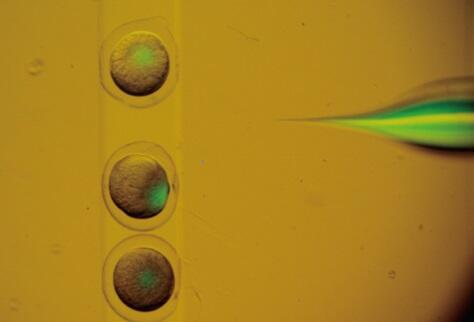
Assistant Professor of Aquaculture Genetics and Genomics and Marine Life Science at the Graduate School of Fisheries Sciences at Hokkaido University.
Q1. What kind of child were you?
A1. I came to Hokkaido through a seaside study program and familiarized myself with fish under the tutelage of host parents who were fishermen.
My encounter with fish started when I visited my relatives in Kyushu and they took me fishing. After that, I enjoyed fishing every time I visited them. One day, before I graduated elementary school, my parents showed me a newspaper article about a seaside study program in Hokkaido and said, "Why don't you go there?" The photo of spawning salmon with their mouth wide open left a very strong impression on me. Without hesitation, I decided to apply for the program to spend time in nature-rich Hokkaido during junior high school.
I studied in a fishing village called Oshirabetsu in the town of Hiroo, where I was able to get closer to many types of fish under my foster parents, who were engaged in seaweed harvesting. I feel that the experience became the root of my fish research. In my university work, I focused on the mechanism of 'sex' determination in fish. In the reproductive genetics laboratory to which I belonged, I discovered that the role of germ cells in killifish is to turn individual fish into females, and I successfully identified the sex-determining gene during the doctoral course. I remember my body shaking with excitement when I saw the results of this experiment.

Q2. What is your present research topic?
A2. Fish germ cells are the key. I collaborate with students to understand the phenomena.
At FOREST, I am applying knowledge about induced pluripotent stem (iPS) cells to try to create germ cells from fish fin cells. Even if the fin is cut off, the cells regenerate to their original state. Therefore, if the proper conditions were provided, the cells may differentiate into various cells. Accordingly, I hypothesized that by producing germ cells from fins and transplanting them into the testes or ovaries, it would be possible to collect the sperm and eggs necessary for regenerating individuals. If this method is established, it will facilitate fish breeding, the conservation of genetic resources, and the reproduction of endangered species from the fins alone, even for fish whose sperm and eggs are difficult to collect.
As a preliminary step, I am presently cultivating fertilized killifish eggs and proceeding with an approach to create germ cells using pluripotent stem cells (ES cells) extracted from the early embryos. Although there are many difficulties in carrying out experiments while communicating with students, the excitement is exceptional when I get good results.

Q3. What message do you have for those who want to become researchers?
A3. Take action first, then think. The ability to take on challenges opens up the future.
There are many problems to overcome before creating germ cells from fins. If fish production from fin cells is realized in the killifish model, I would also like to try reproducing germ cells from the fins of other fishes. Fish are among the most diverse of vertebrates. Different fish species may adopt other processes in germ cell differentiation. I believe that experiments with a variety of fish will lead to not only applications to a wide range of fish species but also a better understanding of the common principles of reproduction phenomena.
I have previously met Dr. Takashi Iwamatsu, Professor Emeritus at the Aichi University of Education and the author of 'The Integrated Book for the Biology of the Medaka.' It was from him that I received the message "Move first, then think." I feel that this is the most important message for researchers. In research, it is not only about thinking inside your head; first move your hands through experimentation, and then repeat the process of carefully verifying the results obtained. I would like students to not only devote themselves to their studies but also cultivate their ability to take on any challenge through extracurricular activities outside the university and travelling.
(Article: Manami Yokoi)

Profile
Toshiya Nishimura
Born in Osaka Prefecture.
Completed a doctoral course in Physiological Sciences at the Graduate University for Advanced Studies (SOKENDAI) in 2015. Obtained a PhD (Science).
Assumed his current position in 2020 after working as a research fellow of the National Institute for Basic Biology (NIBB) and as an Assistant Professor at the Graduate School of Science of Nagoya University. Researcher at the Fusion Oriented REsearch for disruptive Science and Technology (FOREST) since 2022.




